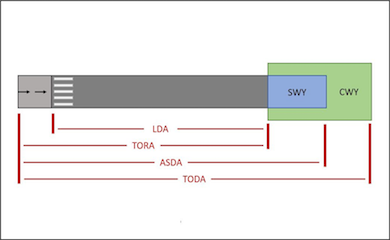On the 3rd April 2025, the UK Government approved significant expansion plans for London Luton Airport, allowing passenger capacity to increase from 18 million to 32 million per annum [1]. The decision by the Secretary of State, which overrules the recommendation for refusal by the Examining Authority, sets the stage for a series of infrastructure and operational changes at the airport.
What is Changing?
The Development Consent Order (DCO) [2] – the granting mechanism for developments of national significance – paves the way for the following key changes:
- Construction of a second terminal (Terminal 2).
- Extensions and modifications to the existing Terminal 1.
- Additional taxiways and aircraft stands.
- Road improvements and sustainable transport links, including enhancements to the Luton Direct Air-Rail Transit (DART) system.
- Landscape and drainage infrastructure to support the expanded footprint.
The operator, Luton Rising (wholly owned by Luton Borough Council), estimates the project will contribute over £1.5 billion per year to the economy and support up to 11,000 new jobs.
Aviation Considerations
Major airport expansions are developed to coexist and support the current airport operations meaning that they can be designed around constraints such as the Obstacle Limitation Surfaces (OLS) and the interference zones around Communications, Navigation and Surveillance (CNS) equipment. However, the airport must still ensure wider aviation issues are assessed appropriately prior to construction, which includes:
- Implications on the Luton Airport’s airspace modernisation and wider flight paths associated with other airports.
- Establishment of a ‘safe systems of work’ to ensure that the existing airport operations can continue safely during construction.
- Glint and glare impacts from rooftop and car canopy solar panels, which will need to be assessed for potential interference with aviation receptors such as the Air Traffic Control (ATC) Tower and approaching aircraft.
The developer has worked extensively with the Civil Aviation Authority (CAA) throughout the process to determine the viability of the project, and all matters set out in the Statement of Common Ground (SoCG) have been agreed at this stage. Nonetheless, further aviation impact assessments and reviews by all stakeholders will be required as detailed designs progress.
Additional Environmental Considerations
A significant point of contention has been the additional environmental impacts of the expansion. The expansion does not include restrictions on the number of flights, which remains a concern for environmental groups; however, the airport has a commitment to achieve Net Zero airport operations by 2040.
Wider environmental impacts include the increased aircraft noise, particularly over the nearby Chilterns Area of Outstanding Natural Beauty (AONB), and Green Belt encroachment, including the proposed loss of Wigmore Park.
Conclusion
The approval of the Luton Airport expansion reflects the government’s desire to stimulate economic growth while progressing towards sustainable aviation, though the conflict between environmental protection and aviation growth is unlikely to disappear.
As with other UK airport expansions (e.g., Heathrow, Stansted), coordination between the airport, regulators, and technical consultees will be key to avoiding delays and discharging the relevant planning conditions.
About Pager Power
Pager Power undertakes technical assessments for developers of renewable energy projects and tall buildings worldwide. For more information about what we do, please get in touch.
References
[1] Fullbrook, D. (2025) Luton Airport expansion approved by government, BBC News. Available at: https://www.bbc.co.uk/news/articles/cy4vg2d9v7no (Accessed: 14 April 2025).
[2] Planning Inspectorate (2025) The London Luton Airport Expansion Development Consent Order 2025, National Infrastructure Planning. Available at: https://infrastructure.planninginspectorate.gov.uk/wp-content/ipc/uploads/projects/TR020001/TR020001-003769-250403%20Recommended%20DCO%20final%20.pdf (Accessed: 14 April 2025).
Image accreditation: Cloudy Design – stock.adobe.com (Accessed: 14th April 2025).




